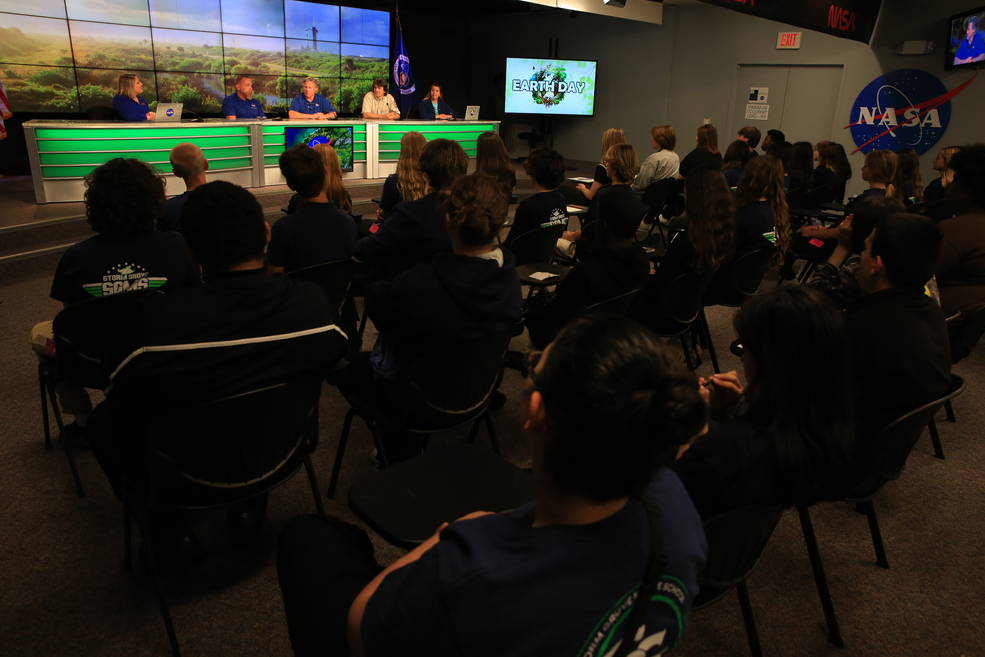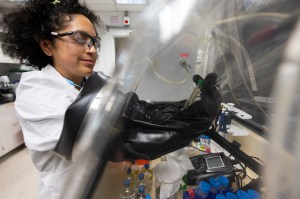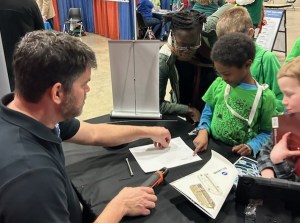Ask students what they think about NASA’s Kennedy Space Center in Florida, and they might talk about rocket launches, spacecraft, and satellites. But, turtles, sea grass, and living shorelines? Students visiting the spaceport this past Earth Day, as part of a NASA STEM initiative, learned how Earth science and conservation efforts are also some of Kennedy’s most important missions in science, technology, engineering, math.
About 100 middle and high school students from Florida’s Montverde Academy, Storm Grove Middle School, and Whispering Pines School, as well as a homeschool collective from Georgia, packed into the NASA News Center’s John Holliman Auditorium and Press Site “bullpen” – the room where media traditionally gather to research and file their stories during launches. Students became journalists for a day, participating in an environmentally focused media briefing broadcast live on NASA TV. With a panel comprising NASA environmental and educational experts, students on site and those viewing across the country learned how technology and science coexist with nature at the spaceport.
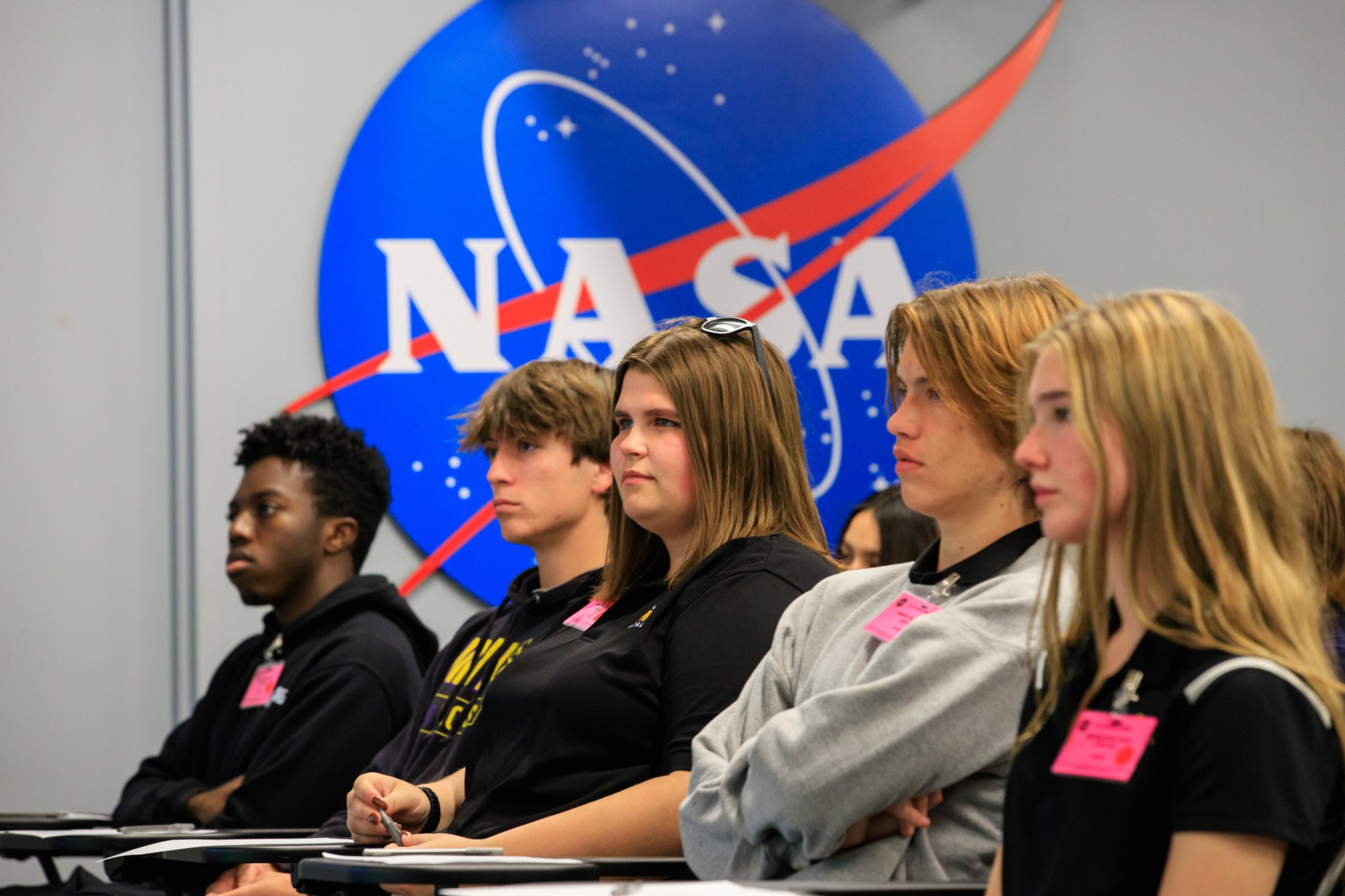
Credits: NASA/Cory Huston
“We’re not just the world’s preeminent launch center. We’re also on a national wildlife refuge,” said panelist Don Dankert, environmental planning group lead in Kennedy’s Environmental Management Branch. “One of the big things we do is finding that balance in how we exist here as an operational launch complex – not just with NASA missions, but commercial missions – and balancing that with managing an amazing national wildlife refuge.”
Kennedy shares over 140,000 acres with Canaveral National Seashore and Merritt Island National Wildlife Refuge, a diverse ecosystem and home to more than 1,000 species of plants, 117 species of fish, 68 species of amphibians and reptiles, 330 species of birds, and 31 different types of mammals. Around 7,500 acres are authorized for use in spaceport operations, leaving over 95% of Kennedy’s land as protected habitat.
“We’ve got 56 state and federally listed species, which is the most federally listed species in the continental U.S.,” said Jeff Collins, environmental protection specialist at Kennedy. “The establishment of the wildlife refuge back in the 1960s was ahead of its time, and it’s really saved the ecological communities on the barrier island.”
Panelists explained how Kennedy works with its federal partners on projects concerning natural resources, energy, sustainability, and cultural historic resources, as well as environmental permitting, air quality, contamination, and remediation. Students also heard about the Apollo 14 Moon trees – grown from seeds flown on the Apollo 14 mission – and tree seeds recently flown on Artemis I that now are growing in nurseries around the country.
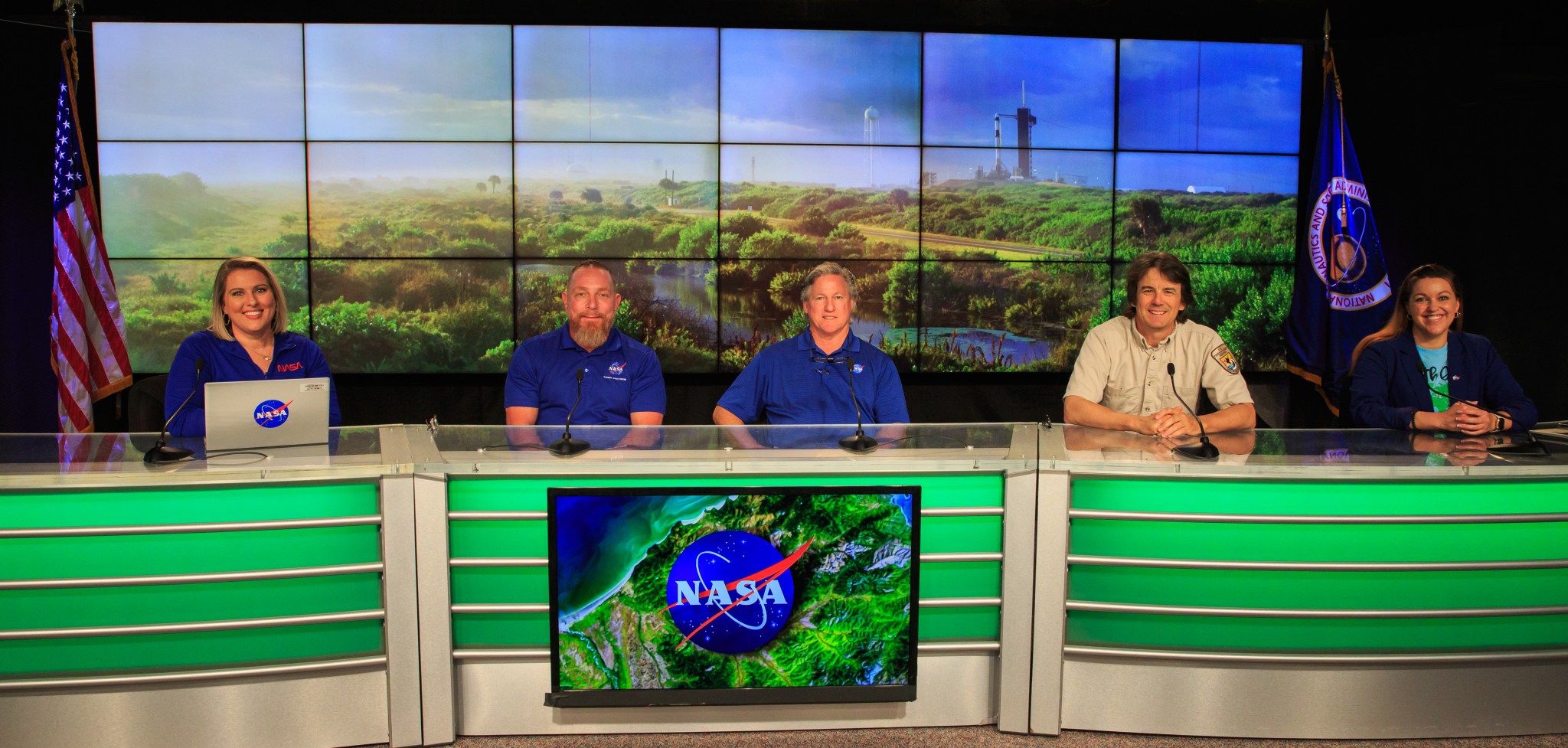
Credits: NASA/Cory Huston
“I got to see rockets and the places they’re assembled, as well as learn about environmental science,” said 10th grader Ben Brown. “I ended the day by being part of a NASA broadcast, so it was pretty cool.”
The students spent the morning viewing some of the spaceport’s facilities and environmental projects, including Kennedy’s shoreline restoration project and sea turtle nesting areas. While fielding environmental questions from the students, the panelists also offered advice on what they could do to help the environment.
“When you think about environmental stewardship, sustainability, and ecological health – maybe think much bigger picture than ‘right here, where I’m at, right now, in my backyard’,” Dankert said. “Think more globally.”
The event was coordinated through NASA Connects in partnership with the Next Gen STEM project through NASA’s Office of STEM Engagement, which reaches students in schools and informal classrooms across the county. The agency’s STEM efforts provide educators with quality resources and opportunities to learn about NASA and engage in authentic experiences that enhance STEM literacy and help build a vibrant and diverse next generation STEM workforce.
“Events like this drop the mystique of ‘NASA’ – rocket scientists and astronauts – it’s so much more than that,” said Dan Jones, teacher at Whispering Pines. “I’m an active member in NASA Connects, that’s how I learned about this, and it’s great for the students to see that there are so many different pathways to success. It’s been a game changer for how I use it and how I infuse it in my curriculum.”
For more information on NASA’s STEM programs and initiatives, visit: Learning Resources.



























